
LOCKHEED SR-71 BLACKBIRD
- Origins and Evolution

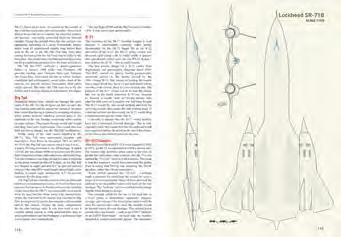
One of the world’s most extreme and enigmatic aircraft, the Lockheed SR-71 Blackbird, is the ultimate evolution of a long line of top secret projects which first coalesced in the form of the CIA’s A-12 reconnaissance platform. American aircraft development specialist Scott Lowther looks in detail at the vast range of different variants and configurations proposed for this remarkable family of highspeed high-altitude jets.
 Author: Scott Lowther £8.99
Author: Scott Lowther £8.99

ON SALE NOW 132 page, full colour, perfect bound bookazine Visit: www.classicmagazines.co.uk/thebookshelf Call: 01507 529529 Also on sale in major UK newsagents, plus other stores




















































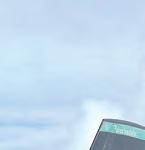












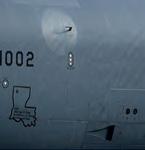














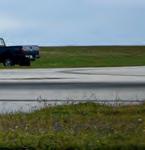
CONTENTS LEGACY CONTENDERS 010 BOEING B-47 STRATOJET 032 THE BIRTH OF THE JET BOMBER 004 NORTH AMERICAN B-45 TORNADO 024 FLATTOP FOLLIES 074 ROCKWELL B-1A AND B-1B LANCER NORTHROP GRUMMAN B-2 SPIRIT NORTHROP GRUMMAN B-21 RAIDER 092 110 128 BOEING B-52 STRATOFORTRESS 054 SEARCHING FOR A SUCCESSOR 078 Author: DAVID BAKER Design: BURDA DRUCK INDIA PVT. LTD. Publisher: STEVE O’HARA Published by: MORTONS MEDIA GROUP LTD, MEDIA CENTRE, MORTON WAY, HORNCASTLE, LINCOLNSHIRE LN9 6JR. Tel. 01507 529529 Printed by: WILLIAM GIBBONS AND SONS, WOLVERHAMPTON ISBN: 978-1-911639-25-1 © 2021 MORTONS MEDIA GROUP LTD. ALL RIGHTS RESERVED. NO PART OF THIS PUBLICATION MAY BE REPRODUCED OR TRANSMITTED IN ANY FORM OR BY ANY MEANS, ELECTRONIC OR MECHANICAL, INCLUDING PHOTOCOPYING, RECORDING, OR ANY INFORMATION STORAGE RETRIEVAL SYSTEM WITHOUT PRIOR PERMISSION IN WRITING FROM THE PUBLISHER. USAF JET BOMBERS 003
THE BIRTH OF THE JET BOMBER
During the 75+ years since the Second World War, the story of the jet bomber can be divided into three distinct evolutionary phases. Phase 1 was from 1945 to 1960, a period of revolutionary change and the transition from piston to turbojet at a time when strategic deterrence relied on a concept of ‘massive retaliation’ with nuclear weapons.

Phase 2 was from 1961 to the 1970s when ‘flexible response’ and burgeoning anti-aircraft defences brought bombers down to low level for high-speed penetration, with both avionics and systems integration maturing. Phase 3 is the period from the 1970s to the present, where stealth, airframe shaping, new materials and advanced avionics have influenced both design and deterrent policy.
Threat assessment has shaped the path followed by planemakers and engine manufacturers but the route was mapped by advancing technologies and shifting geopolitical challenges. Phase 1 set the strategic bomber at the core of US defence policy, even at some expense to land and sea forces.
During this period the US government spent heavily on new technologies and infrastructure

USAF JET BOMBERS
004 USAF JET BOMBERS
A force of B-17s from the 3rd Bomb Division attacking an industrial plant in Marienburg, Germany, in October 1943. The strategic bomber came of age during the Second World War but its true potential awaited the development of the jet engine. (USAF)
for a global bomber force. Foreign bases proliferated and the jet bomber underpinned a new globalisation of American military might.
Phase 2 saw a transition away from the jet bomber to intercontinental ballistic missiles (on land and at sea) for the nuclear delivery role. Bombers now offered a more flexible application of air power, increasingly challenged by massive air defences. Not a single new bomber made it into service during this time – costs soared, questions were raised regarding the efficacy of massive air power and technology began to reshape the dynamic of combat air power.
Phase 3 was itself shaped by shifting challenges, new technologies
which returned the bomber to the deep penetration role and by a reprogrammable application of both conventional and nuclear weapons.
Much of what happened within the American aviation industry during these three periods arose from three separate capabilities – general capability in design, development and production; the capability to make key systems, subsystems and technologies; and the unique capabilities of individual companies.
During each of the three chronological phases, the bombers built depended on both the capabilities available and the existing and projected future military needs of the USAF.
THE JET AGE
The end of the Second World War heralded a transformation in combat aircraft design, performance and capability. The jet engine allowed both bombers and fighters to reach hitherto undreamt of speeds and spurred technological innovation in other areas of airframe and equipment design.

Some of this innovation resulted from the capture of laboratory test results and wind-tunnel trials data from Germany. Before the D-Day invasion of 6 June 1944, German progress with jet and rocket powered aircraft was well known from extensive reconnaissance photography of airfields and research establishments combined with signals intelligence and reports from agents and partisans inside occupied territories across continental Europe.
The world’s first operational jet fighter, the Me 262, was seen in the skies over Europe not long after D-Day and the last enemy aircraft to fly over Britain had been a German jet bomber – the Arado Ar 234 B-1, on 10 April 1945. Initially designed as a pure reconnaissance platform, the bomber variant of the Ar 234 became operational in September 1944 and quickly impressed the Luftwaffe. Its sheer presence was a sobering display of muscular technology already in production and on the flight line.

With its distinctive ‘greenhouse’ nose, high wing mounting on the upper fuselage and single jet pods in the mid-wing position, the Ar 234 was also developed into a night fighter version with four paired BMW 003A-1 turbojet engines. Sleek and fast, it had the potential to worry the Allies but the war ended before its potential could be realised.
Impressive yet under-developed and bedevilled by under-performing and unreliable engines, along with the Me 262 and the Heinkel He 162 it sent a clear and distinct message that the jet age had arrived.
Yet the Allies had not been idle in developing their own jets. The last two years of the war saw a flurry of requirements for new jet types by both the US and Britain. British jet engine inventor Frank Whittle and his company Power Jets test-flew their creation in the Gloster E.28/39 in 1941 and the technology was soon handed over to the Americans.
Together with American companies’ own engine developments, this resulted in several competitive projects – all of which stimulated a surge of interest in applying jet propulsion to fighters, bombers and reconnaissance aircraft.
There were widely differing opinions as to the efficacy of the jet engine at first. Vast manufacturing plants were already churning out thousands of highly developed and highly successful piston engines. These had powered the fighters and bombers that won the
A production line of Consolidated B-24s, classified as heavy bombers during the Second World War. When the war ended in 1945 the USAAF had more than 39,000 combat aircraft – 14,000 of them in this category. (USAF)
USAF JET BOMBERS 005
The first jet bomber to enter combat, the Arado Ar 234 was the last wartime German combat aircraft to enter British skies. (USAAF)
USAF JET BOMBERS The Birth of the Jet Bomber
war and there was an understandable reluctance to simply abandon them after so much time and effort spent perfecting their design.
The jet was unproven and its performance, though significant, was limited. Jet aircraft were exceptionally thirsty – severely reducing range compared to piston-engine designs. Early jets were unreliable too and needed high maintenance; in flight they were slow to spool up, making the aircraft sluggish at low speeds. German Me 262 pilots had found this out to their cost when they were mauled by marauding USAAF P-47s while trying to take-off or land.
Despite all these shortcomings, however, there were also undeniable advantages. Even in their rawest most undeveloped form, the weakest jet engines could provide speeds exceeding those of the very best piston engines and the jet had a higher ratio of cruise speed to top speed and became increasingly efficient with altitude, the reverse of the
propeller-driven aircraft which needs dense air to bite on.
Where the piston engine was already at its peak, jet engine development had only just begun.
COMPETITORS
During the early war years, the United States Army Air Corps had watched with growing interest as jet propulsion was developed in Italy, Germany and Britain but had assessed the competition as being largely a technological race rather than one which would have an immediate effect on combat capabilities.

The engine manufacturers themselves seemed disinterested in air-breathing reaction engines and while historians are uncertain as to exactly why this was the case, most agree that the lucrative market for reciprocating engines discouraged investment in questionable technology. And production of piston engines was now growing exponentially, driven by seemingly insatiable demand.
All that changed when British science adviser Henry Tizard visited America in September 1940 and told his US counterparts about progress made with the Whittle engine. In response to this, development of the jet engine in America really began in February 1941 with the establishment of the Durand Committee on Jet Propulsion.


Three companies were invited to build three separate types of gas turbine: Allis-Chalmers was to design a turbofan engine; General Electric, a turboprop engine; and Westinghouse, a turbojet. During a visit to Britain in March, General Henry ‘Hap’ Arnold, soon to be Commanding General of the US Army Air Forces, acquired access to the Whittle engine, the advanced development of which came as a surprise to the American delegation.
The GE engine development began after the secrets of the Whittle W.1X engine were known in detail. Based on that engine, first run on 18 April 1942, the

006 USAF JET BOMBERS
America’s first jet fighter, the Bell P-59 Airacomet, leaned on the design of the preceding, piston-engine Airacobra, and was powered by two General Electric J31s. (USAF)
The Power Jets W.2B/23 jet engine greatly interested the US Army Air Forces and played a significant role in the development of the first US jetpowered fighters. (David Baker)
A direct development from the Power Jets W.1X turbojet, General Electric’s J31 was designed in 1942 and produced 1,250lb of thrust. (Sanjay Archarya)
General Electric I-A produced a thrust of 1,250lb. When it was seen to run hot, during a visit to GE two months later, Frank Whittle recommended partitions in the blower casing to each chamber and that solved the problem.

The I-A engine powered the Bell P-59 Airacomet, America’s first jet fighter, and formed the basis for further developments applied to other prototype test-beds. When in production, the engine was redesignated I-16, reflecting its 1,600lb thrust output.

As intelligence reports came in about emerging jet fighter designs in Germany, and with the certain knowledge about Britain’s plans, the newly renamed Army Air Forces urged development of competitive jet fighters – more as development prototypes than definitive designs. But it was foreseen that the development of jet bombers would have to wait until engines with more power and better fuel consumption became available, since a successful bomber requires a decent payload capability as well as good range.
The Me 262, though, demonstrated that efforts to design and build a jet bomber could not wait. It was clear that any enemy armed with jet fighters would make quick work of lumbering pistonengine bomber formations. The drive for a jet bomber therefore began as early as June 1943.
The AAF pushed ahead on two fronts to make such an aircraft viable: firstly, more powerful jet engines were essential, and secondly an appropriately efficient airframe design was needed to attain the highest possible cruising speeds. Industry was incentivised to study both. Only by displaying financial commitment could the AAF get industry interested, accepting that they would be developing a production engine rather than a shortrun, experimental prototype.
With work already under way on jet fighter engines, GE was the company to go to, although it had been tasked with looking into turboprop designs, while Boeing was approached to come up with an airframe.
US Army Materiel Command was keen to push design studies for a bomber equipped with four GE TG-180 jet engines and AAF headquarters endorsed this decision in September 1943 when Boeing was given access to information about the Bell XP-59, at the time a highly secret project as was all jet engine research. Boeing openly expressed surprise that jet research had got as far as producing a flying prototype fighter and this mirrored the shock throughout the industry as word slipped out and the AAF revealed all.
Early Boeing studies were presented over the next two months and the chief of the engineering division at Wright Field concluded that “Contrary to the existing belief that jet-propelled aircraft

USAF JET BOMBERS 007
With development of jet engines and rocket propulsion, immediately after the war debate focused on whether to use cruise missiles rather than bombers to attack distant targets, epitomised by the Martin TM-76 Mace with a jet sustainer and rocket booster motor. (US Army)
Alarmed by catastrophic attacks on unescorted bombers over Germany, in early 1944 Bell was encouraged to develop the XP-83 jet-powered escort out of the P-59 but it never went into production. (Bell)
Typical of a generation of cruise weapons, the ramp-launched Mace had its conceptual origins in the German V-1 flying bomb but was superseded by the ballistic missiles of the late 1950s. (US Army)
USAF JET BOMBERS The Birth of the Jet Bomber

The ultimate expression of early generation cruise weapons, the Northrop SM-62 Snark missile similarly had a jet sustainer but was boosted by solid-propellant rockets. It was precursor to stand-off weapons launched by bombers. (USAF)
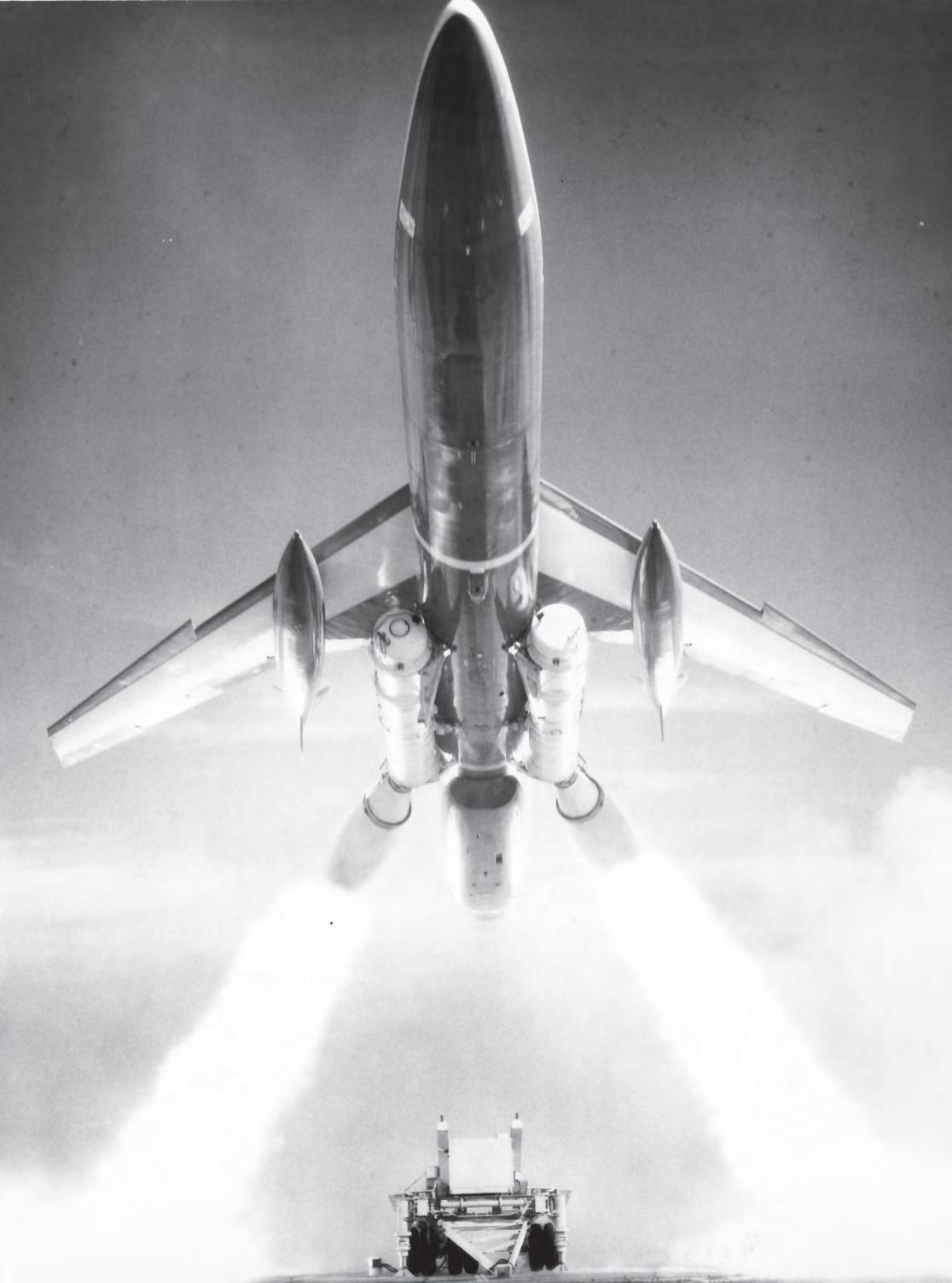
JET BOMBERS
008 USAF
are limited to short ranges… the Boeing studies indicate that… the range of jet propelled aircraft may exceed that of conventional aircraft”.
The big catch here was that, according to Boeing, jet engines would be more efficient if a speed of 600mph could be achieved – but at the time nobody knew how to make a bomber able to fly that fast. Nevertheless, Air Materiel Command (AMC) got excited about the possibilities and approved an informal request for proposals. This resulted in Boeing and North American submitting initial designs in January 1944.

Boeing progressively refined their ideas over a series of models (413, 422, 424, 425 and 426) to end up with a turboprop, rather than a turbojet, concept to make maximum use of the better range over the pure jet. Because the AAF was also interested in speed, Models 424 and 425 featured turbojets. Unaddressed, largely because nobody knew a great deal about it, was the compressibility effect experienced close to the transonic zone. Added to the uncertainty was the sluggish development of the TG-180 engine.
Desperate to get a high-performance bomber, the AAF asked Wright Field to verify the engineering assessment and confirm that such a high-speed jet bomber could be built within two years, which it was not able to do. So little was known about the aerodynamics of highspeed cruise conditions that scientists and engineers were unable to provide the guarantees sought.
In November 1944, the AAF issued a requirement for a bomber with a top speed of 550mph – almost 200mph faster than the B-29 – carrying an 8,000lb bomb load on a 3,500 mile mission and with a
service ceiling of 40,000ft. Questioned by politicians about the strident push for a new jet bomber, the AAF explained that the technical requirement would be set above the requirement for early service introduction and that, by issuing a formal request to industry, higher levels of funding could be released for development.
While Boeing was highly sceptical about a high-speed jet bomber, the AAF was emphatic in its desire to have one and brooked no compromise in the requirement – though it was prepared to accept a delay of up to two years in getting prototypes into the air.
PROPOSALS
As the AAF moved toward a procurement strategy, confidence in the strategic bomber concept was at an all-time high. Across Nazi-occupied Europe, German industry was being pounded into dust, marshalling yards and railroads were being destroyed and cities across Japan were suffering a massive onslaught from the B-29. The atomic bomb had already been tested at Alamogordo, New Mexico. Bids for the new bomber were requested and four companies had responded by January 1945. Attracted by the prospect of lucrative development contracts, industry quickly switched from an attitude of cynicism over the jet bomber concept to one of enthusiasm. With the Me 262 operational over occupied Europe, the Ar 234 bomber/ reconnaissance aircraft rolling off the line and Britain putting the Gloster Meteor into production, American aircraft manufacturers were beginning to relish the challenge of building the nation’s first jet bomber.
The procurement strategy would follow a three-phase programme. The first phase would assess the feasibility of meeting the requirement and examine technical hurdles, risks and potential show-stoppers. The second would see designs fully completed, with engineering drawings made and mock-ups of specific proposals constructed.
The third phase involved construction, flight testing and competitive evaluation of prototypes. The emphasis here would be on configuration, flying qualities and actual performance compared to the requirement. There would be less focus on ancillaries and supplementary equipment.
Prototype dimensions and weights would represent those of a definitive, production aircraft but spaces would be left for electrical systems, weapons and general ergonomics of the flight deck.
This was to be a welcome departure from the existing ‘concurrency’ concept, where development and production ran together, the early airframes off the assembly line having to be retrofitted with any modifications or improvements highlighted as desirable through the development process. This method got aircraft to the front line and in quantity more quickly in theory but it had proven an administrative nightmare on the B-29 and would plague the B-36 too.
The phased development programme shifted the burden of administrative micro-management from the military to the contractor, but there was no other way to run a programme in which so many design and construction variables were unknown. It also made it easier to cancel a competing prototype, since no production had yet commenced.
USAF JET BOMBERS 009
Boeing’s KB-50J, a derivative of the B-50 bomber adapted as a cargo-tanker, the last of the piston-engine types pressed into service to support earlygeneration jet bombers. (USAF)
LEGACY CONTENDERS
The four manufacturers responding with proposals to the November 1944 jet bomber requirement were Boeing, Convair, Martin and North American. All four were given contracts to build flying prototypes for a competitive fly-off. There was only one production contract on offer though –the AAF had expressed a desire for just one in-service jet bomber.

The biggest ‘unknown’ was the engine itself, followed by uncertainties about compressibility and aerodynamic stability in the high-subsonic regime. The first was a technological challenge, the second and third could only be solved through scientific and engineering investigation.
The overall challenge of mathematically defining flying characteristics close to the transonic
zone had already prompted the National Advisory Committee for Aeronautics (NACA, precursor to NASA which it became in October 1958) and the AAF to build the Bell XS-1 rocketplane. Hopes were high that the XS-1 would break through the misnamed ‘sound barrier’ and explore supersonic flight.

All four jet bomber proposals were ambitious and technically challenging –but to varying degrees. North American’s B-45 was the most conservative, adopting a conventional wing design with a proven NACA cross-section and four jet engines.
The Convair B-46 (Model 109) went further into the unknown with an aerodynamically unproven highaspect ratio wing set on a long, slender fuselage. Thanks to its small cross section, the fuselage had little bomb bay volume yet it weighed more than
that of the proposed B-45.
Boeing’s B-47, at this stage simply the Model 432, featured a conventional, straight wing with four engines and main landing gear in nacelles. And the Martin B-48 was unusual in having six engines in two nacelles, one on each wing, which had a thickness-chord ratio so low that the landing gear had to go in the fuselage.
The relatively simple B-48 was liked best since it had no glaring flaws and promised an early in-service date. Although the AAF had put performance before availability, it began to see the possibility of an early introduction. Although the unusual features of Martin’s design would add a further 18 months to the development cycle, the company projected a top speed of 534mph compared to 486mph for the B-45 and 478mph for the B-46.
USAF JET BOMBERS
Boeing’s mighty B-29, left, is dwarfed by the enormous Convair B-36. These two aircraft represent the peaks of wartime and immediate post-war bomber design respectively. (USAF)
010 USAF JET BOMBERS
But the company had an aggressive and demanding marketing approach. Martin VP Harry T. Rowland wrote to the AAF demanding that his company’s design be given priority consideration. If he didn’t get it, he would take the design to the Navy!
In addition to the four bids from January 1945, there were three other bomber projects where jet propulsion was under consideration – the B-35, B-36
and B-42. The first two of these initially piston-engined types had emerged in the late 1930s and early 1940s during the Air Corps’ search for a very long range, strategic bomber. The B-42 had come slightly later as a result of a private company project.
The catalyst for the B-35 and B-36 was the belief that the US might have to fight Nazi Germany from North America –

requiring a bomber able to fly to Europe and back without landing. This prospect came closer to reality in 1940 when German forces overran Norway, France and the Low Countries, only being halted short of an invasion of the British Isles by the natural barrier of the English Channel, the RAF and the threat of the Royal Navy.
At this date the only long-range US bomber, the B-17C had a combat radius

USAF JET BOMBERS 011
With pressurised crew compartments and bristling with defensive armament, the B-29 was an important step forward in the design of bomber aircraft. (USAF)
Maintenance crews at work on B-36s of the 7th BW at Carswell AFB. Convair built 385 B-36s in total. (Dennis Jenkins)
USAF JET BOMBERS Legacy Contenders

of 900 miles. A flight from New York on the American east coast to Brest on the French coast and back would require a range of 6,700 miles even allowing no margin for error. Under development at the time, the conventional B-15, B-19 and B-29 also fell way short of the required range.
FLYING WING CHALLENGER
The Air Materiel Division had stipulated a range of 10,000 miles for the long-range bomber it wanted – and it would have to carry a 10,000lb bomb load too. Among the bidding manufacturers was Jack Northrop with his flying-wing design. Believed to have tremendous potential, 13 prototypes and 200 production B-35s were ordered by the AAF in November 1942, with the contract formalised on 30 June 1943.
Under this agreement, Martin would build B-35s in its cavernous Baltimore, Maryland, facility in space vacated due to the cancellation of the B-33 – a proposed high-altitude B-26 Marauder variant – on 25 November 1942. Founded only in August 1939, Northrop lacked the capacity or the resources to build the aircraft in quantity itself and needed a major manufacturer’s support to do so.
Around the same time, the Materiel Division also approved Convair’s B-36 design proposal, a six-engine, pusher type for which a requirement for 100 had been indicated in August 1942. The B-35 was given highest priority while the B-36 suffered from accelerating production requirements for existing bomber programmes such as the B-25, B-26, B-17 and the advanced B-29.

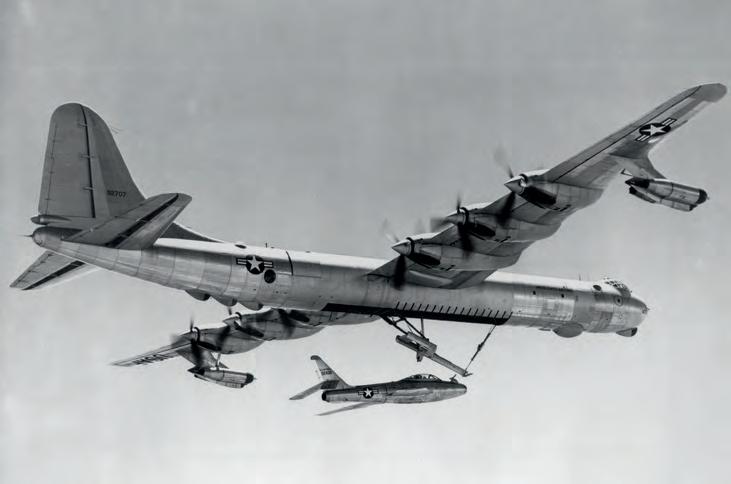
However, the revolutionary flying wing hit persistent problems and technical delays, with an ever-growing catalogue of development issues. By mid-1943 the technical challenges, and engineering problems, were sufficiently great as to relegate the B-35 to experimental status with efforts concentrated on the B-36 instead.
By 1944 events across the Pacific Ocean were taking a different turn and there was increasing confidence that the B-29 would be adequate for the task of bringing the war home to mainland Japan. The urgency had gone away and both types were under threat. During its much delayed first flight on 25 June 1946 the XB-35 was plagued with gearbox and engine troubles from its four pusher engines and contra-rotating propellers.

One way of addressing these problems was to replace the reciprocating engines with jets and in June 1945 an order had been authorised requiring two YB-35 prototypes to be so converted.
Featuring eight 4,000lb thrust J35 engines (formerly the TG-180), the B-49 concept had significant changes, with four small trailing edge fins, four large wing fences and a redesigned leading edge to provide a low-drag intake for
012 USAF JET
BOMBERS
the
With ‘six turning, four burning’, the mixed propulsion B-36J and H variants made numerous reconnaissance and surveillance flights close to and beyond the border with the Soviet Union and Warsaw Pact countries at the height of the Cold War. (Dennis Jenkins)
Early jet fighters lacked the range to escort the B-36 so tests were carried out using modified RF-84Ks to see whether the bomber could carry its own parasite escort fighters. (Dennis Jenkins)
Two B-36Fs were converted into swept-wing all-jet bombers under the YB-60 designation. One is seen here with a standard B-36F for comparison. They proved slower than the B-52 and no more were built. (USAF)



 Author: Scott Lowther £8.99
Author: Scott Lowther £8.99





































































































